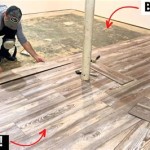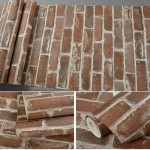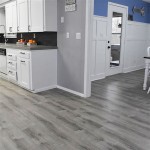Average Cost of Installing Wood Flooring
Wood flooring is a popular choice for homeowners seeking to enhance the aesthetic appeal and value of their properties. Its natural beauty, durability, and versatility make it a desirable option for various rooms, from living areas to bedrooms. However, understanding the average cost associated with wood flooring installation is crucial for effective budgeting and project planning. This article aims to provide a comprehensive overview of the factors influencing the cost of installing wood flooring, offering a detailed breakdown of various materials, labor expenses, and potential hidden costs.
The overall cost of installing wood flooring can vary significantly depending on several factors, including the type of wood, the size of the area being covered, the complexity of the installation process, and the location of the property. It is essential to consider all these elements to obtain an accurate estimate of the total expense involved.
Factors Influencing the Cost of Wood Flooring Installation
Several key factors contribute to the overall cost of wood flooring installation. These include the type of wood chosen, the preparation required for the subfloor, the complexity of the flooring pattern, and the location of the installation. Each of these factors can significantly impact the final price.
The
type of wood
is a primary driver of cost. Hardwood species like oak, maple, and cherry are generally more affordable than exotic hardwoods such as Brazilian walnut or teak. Engineered wood, which consists of a thin layer of hardwood bonded to a plywood core, is often a more budget-friendly alternative to solid hardwood. Each type of wood offers different aesthetic qualities, durability levels, and resistance to moisture, which also influence the price.The
condition of the subfloor
is another critical factor. A properly prepared subfloor is essential for a successful and long-lasting wood flooring installation. If the existing subfloor is uneven, damaged, or requires significant repairs, additional costs will be incurred. Subfloor preparation may involve leveling the surface, repairing cracks, and ensuring adequate moisture protection. The cost of subfloor preparation can range from a few hundred to several thousand dollars, depending on the extent of the work needed.The
complexity of the installation
also affects the cost. Straightforward installations in rectangular rooms are typically less expensive than installations in rooms with irregular shapes, intricate patterns, or custom borders. Complex patterns, such as herringbone or chevron, require more time and skill, resulting in higher labor costs. Custom borders or inlays can also add to the overall expense.The
location of the installation
plays a role in determining the cost. Labor rates vary depending on the region and the availability of skilled flooring installers. Areas with a higher cost of living generally have higher labor rates. Furthermore, accessibility to the installation site can also impact the cost. Installations in multi-story buildings or remote locations may incur additional charges for transportation and handling of materials.Finally,
additional materials
such as underlayment, adhesives, and finishing products contribute to the overall cost. Underlayment provides cushioning, sound insulation, and moisture protection, enhancing the performance and longevity of the wood flooring. High-quality adhesives are essential for securing the flooring to the subfloor. Finishing products, such as sealants and stains, protect the wood surface and enhance its appearance. These ancillary materials can add a few hundred to a few thousand dollars to the total project cost, depending on the quality and quantity used.Breakdown of Wood Flooring Materials Costs
The cost of wood flooring materials is a significant component of the overall installation expense. Understanding the different types of wood flooring and their associated prices is essential for making informed decisions.
Solid Hardwood Flooring:
Solid hardwood is made from a single piece of wood and is known for its durability and longevity. Common hardwood species include oak, maple, cherry, and walnut. The cost of solid hardwood flooring typically ranges from $5 to $15 per square foot, depending on the species, grade, and finish. Exotic hardwoods, such as Brazilian walnut or teak, can cost significantly more, ranging from $10 to $25 per square foot.Engineered Wood Flooring:
Engineered wood flooring consists of a thin layer of hardwood veneer bonded to a plywood or fiberboard core. It is more resistant to moisture and temperature fluctuations than solid hardwood, making it suitable for basements and other areas with high humidity. Engineered wood flooring is generally less expensive than solid hardwood, ranging from $3 to $10 per square foot. The cost varies depending on the thickness of the veneer, the quality of the core material, and the finish.Laminate Flooring:
While not actually wood, laminate flooring often mimics the appearance of wood and is the most affordable option. Laminate flooring consists of a composite core topped with a photographic layer that replicates wood grain. It is durable, easy to clean, and resistant to scratches and stains. Laminate flooring typically costs between $1 and $5 per square foot.Bamboo Flooring:
Bamboo is a sustainable and eco-friendly flooring option that is known for its strength and durability. It is available in various styles and finishes, including horizontal, vertical, and strand-woven. Bamboo flooring generally costs between $3 and $8 per square foot.Reclaimed Wood Flooring:
Reclaimed wood flooring is made from recycled timber, such as old barns, factories, and warehouses. It offers a unique and rustic aesthetic and is an environmentally friendly option. Reclaimed wood flooring can be more expensive than new wood flooring, ranging from $8 to $20 per square foot, depending on the species, condition, and rarity of the wood.In addition to the cost of the flooring itself, it's crucial to factor in the costs of underlayment, adhesives, and finishing materials. These materials can add an additional $1 to $3 per square foot to the overall cost.
Labor Costs Associated with Wood Flooring Installation
Labor costs represent a significant portion of the overall expense of wood flooring installation. The cost of labor can vary depending on the complexity of the installation, the location of the property, and the experience of the flooring installer.
The average labor cost for installing wood flooring ranges from $3 to $8 per square foot. This includes the cost of preparing the subfloor, installing the flooring, and applying the finishing coats. More complex installations, such as those involving intricate patterns or custom borders, can increase the labor cost to $10 or more per square foot.
Factors that influence labor costs include the size of the area being covered, the complexity of the installation process, and the location of the property. Larger areas typically require more labor hours, resulting in higher total labor costs. Complex installations, such as those involving intricate patterns or custom borders, require more time and skill, leading to higher labor rates.
The experience and qualifications of the flooring installer also impact labor costs. Experienced and licensed flooring installers often charge higher rates than less experienced installers. However, hiring a qualified installer can ensure a high-quality installation and minimize the risk of problems such as uneven flooring, gaps, or squeaks. It is important to research potential installers, check their references, and obtain multiple quotes before making a decision.
In addition to the basic labor costs, there may be additional charges for services such as furniture removal, disposal of old flooring, and cleanup. These additional services can add a few hundred to a few thousand dollars to the total labor cost.
It is essential to obtain a detailed estimate from the flooring installer that includes a breakdown of all labor costs. This will help ensure that there are no unexpected charges and that the project stays within budget.
Homeowners should also consider the potential for unforeseen issues during the installation process. These can include unexpected subfloor repairs, plumbing or electrical issues, or the need to relocate furniture or appliances. It is advisable to set aside a contingency fund to cover these potential expenses.
Obtaining multiple estimates from different flooring installers is crucial for comparing prices and services. Be sure to ask each installer for a detailed breakdown of their labor costs, as well as any additional fees they may charge. This will help you make an informed decision and choose the installer that offers the best value for your money.
Ultimately, understanding the various factors that contribute to the cost of wood flooring installation is essential for effective budgeting and project planning. By carefully considering these factors and obtaining multiple quotes from reputable flooring installers, homeowners can ensure a successful and cost-effective installation.
The investment in wood flooring can significantly enhance the value and aesthetic appeal of a property. By carefully planning and budgeting for the installation, homeowners can enjoy the beauty and durability of wood flooring for many years to come.

Average Hardwood Flooring S In 2024 Forbes Home

Cost To Install Hardwood Floors The Home Depot

Fixr Com Cost To Install Hardwood Flooring Floor

Cost To Install Hardwood Floors The Home Depot

How Much Does Hardwood Flooring Cost 2024 Guide

Here S How Much Hardwood Flooring Costs In 2024 Angi

How Much Hardwood Flooring Costs And To Save

How Much Does Flooring Installation Cost In 2024 Forbes Home

Cost To Install Hardwood Floors The Home Depot

How Much Does Flooring Installation Cost 2024 Guide
Related Posts








